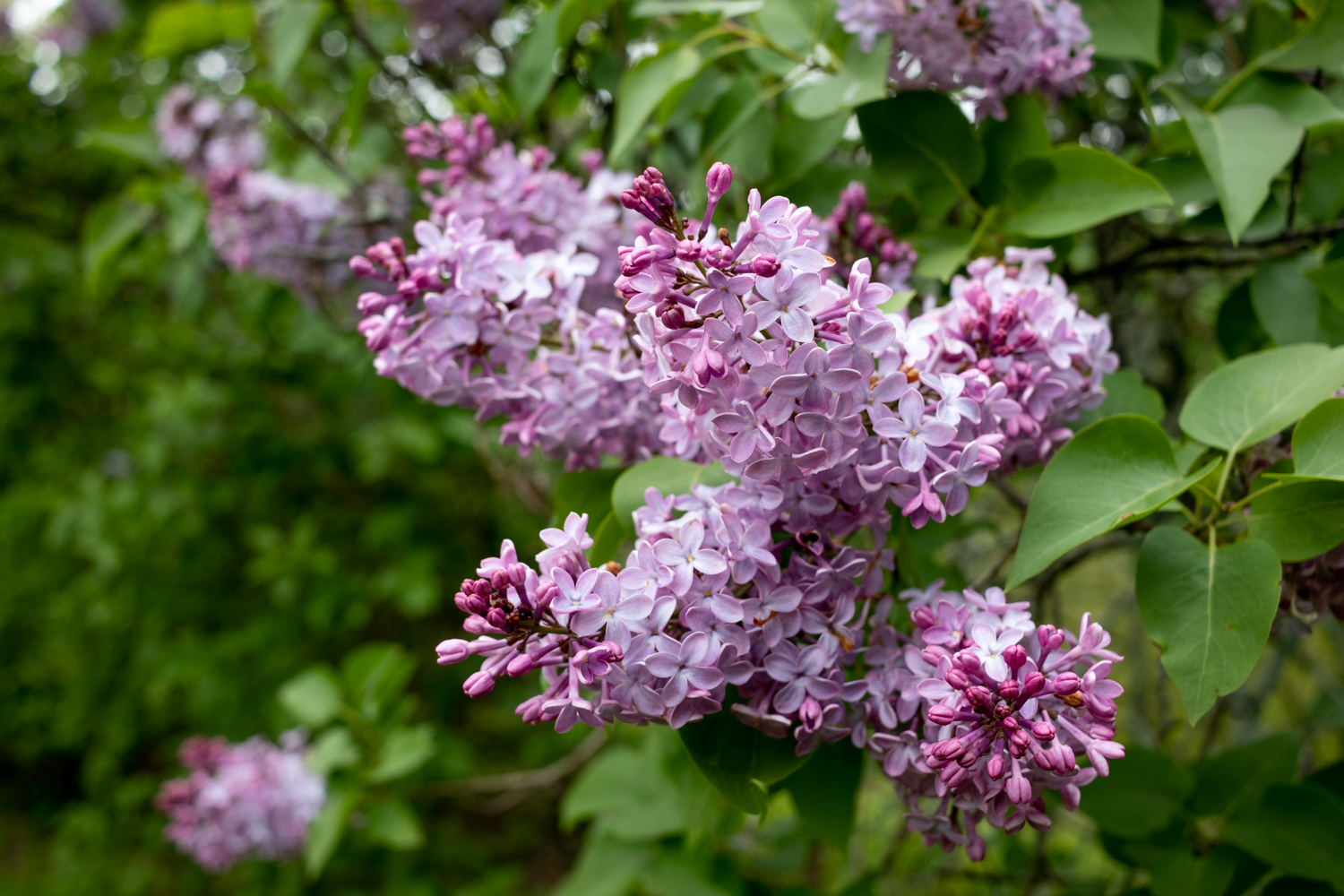
Among the most incongruous facts of the coronavirus era is that spring pushes forward with or without us. Our ways of life have been scrambled into unimaginable forms. Yet daffodils (Narcissus) and early blooming shrubs did not notice. Forsythia popped up like yellow raincoats on a swampy day—over in this yard, along that path—brilliant but stark reminders of the sun hidden from view. Their unrelenting arrival felt like someone smiling when you are upset, making matters even worse. Often, what we really want is someone to share the grief, to recognize that the emotion could never—or not yet—be smiled away. Some plants, however, are more empathetic than others. The common lilac (Syringa vulgaris) is chief among them. “When lilacs last in the dooryard bloom’d,” Walt Whitman famously wrote, in an elegy for Abraham Lincoln, “I mourn’d, and yet shall mourn with ever-returning spring.”
Common lilacs—whether loved or loathed by gardeners—have an unmistakable power to prompt the muse. The flowers arrive just as temperatures are warming, at the vanguard of the green takeover. Their fragrance is humid and thick, instantly, for many, evoking a remembrance of springs past. It is sweet but not insipid, like a sad melody that becomes a post-breakup hymn. “Lilac wine is sweet and heady,” the singer Nina Simone laments over a bare skeleton of piano chords, “Where’s my love?” The fragrance permeates the air of another song, by the folk singer Greg Brown, that pays similar tribute to a long-ago love: “I can still smell the lilacs,” he sings, “in the corner of the dream café.” The fragrance is one of nostalgia. For me, it provides an instant incantation of the backyard of my childhood. My mother loves lilacs, in part because they were a reminder of her mother, who also loved lilacs, and of her grandmother, who planted one near the outhouse on the family farm. Memories and stories rise from beneath the haze.
This year, among many communal changes, Lilac Sunday, the long-standing tradition that brings tens of thousands of people to the Arnold Arboretum on Mother’s Day, has been canceled. Yet, the lilacs will still swell with their languorous fragrance. The slope of Bussey Hill will still be shrouded with lavender and cream, violet and wine. Somehow, in this time of social distancing, it seems almost poetic that a day in the lilacs would become another marker of how society has changed. We can (and should) have private celebrations—a personal Lilac Tuesday, an early morning Lilac Friday—but the collective fanfare will be heard only in the spool of memory.
The function of common lilacs as an aide-mémoire is unquestionably interwoven with the biology of the plant—what I call the subjective biology. The emotive power would not be the same without the overwhelming fragrance. It would not be the same if the plants were smaller or less robust. Lilacs are not finicky garden curios that have to be coaxed into flower. When Henry David Thoreau wrote about the landscape at Walden Pond, he described an overgrown place where a home had once stood. “Now only a dent in the earth marks the site of these dwellings,” Thoreau wrote. “Still grows the vivacious lilac a generation after the door and lintel and the sill are gone, unfolding its sweet-scented flowers each spring, to be plucked by the musing traveller; planted and tended once by children’s hands, in front-yards … the last of the stirp, sole survivor of that family.” The plants had outlasted even the foundation. The blossoms had become the lone trail marker into the past.
At the Arnold Arboretum, a scattered hedge of lilacs runs across the upper slope of Bussey Hill (see accessions 301-2012 and 364-2012). The hedge was part of the landscape around the house of Benjamin and Judith Bussey, the landowners who ultimately deeded their property to Harvard University. The house faced South Street. It was finished in 1816, with a driveway approaching the entrance like a half moon. A barn was positioned behind the house, tucked against a steep slope that rises towards the summit of the hill. The barn’s gap-toothed foundation is still visible today, but the foundation of the house is mostly covered with grass—a raised bit of lawn. Still, the lilacs persist. They flowered last year and the year before. They flowered during the Civil War and during the Great Depression, and all through the century that poet Muriel Rukeyser would call “the first century of world wars.” And they will flower this year, too—a reminder not of the world moving on without us but of a world in which our past and present move on together.